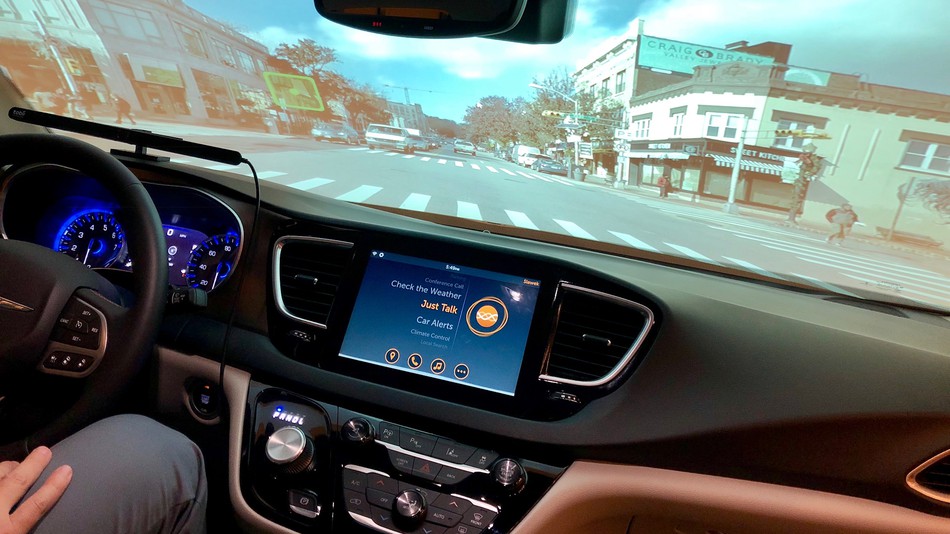Voice assistants like Siri and Alexa have made our lives infinitely easier. But can they actually help you research purchases to save money?
“Alexa, how do I lower my car payment?”
They have only been around a few years, but it’s already difficult to remember a time before “Siri” and “Alexa” were household names. Today’s voice assistants don’t just make for entertaining commercials and hands-free texting. They have also become a popular option for consumers looking to research and make product purchases.
Their functionality in the voice commerce sphere stretches beyond reordering household goods on Amazon, though. Consumers are using voice assistants to help them do everything from tracking monthly bill trends to optimizing their home’s smart devices. It’s easy to see how we could soon utilize technology like Alexa and Siri to, say, reduce our monthly car payments or shop around for a new mortgage.
Let’s take a look at how voice assistants can already help you manage (and improve) your monthly finances, as well as the technology that’s just on the horizon.
Current Functionality of Voice Assistants
There is no shortage of voice assistant users worldwide. In fact, a recent report published by GlobalWebIndex found that a surprising 27% of the global population is already using voice search on their mobile devices. That’s even more surprising when you consider that Siri’s beta just rolled out in 2011, Google debuted a very basic version of their assistant the same year, and Alexa was only introduced in 2014.
In only a few short years, the idea of speaking commands to our devices went from sci-fi fantasy to everyday reality. This goes beyond telling devices to turn on or lowering the volume on our speakers, too. We now have devices that are connected throughout our home, cars, place of work, and even our pockets. These devices can communicate with one another to create a comprehensive life management system, and provide an insight into important areas… like our finances.
Whether through voice-enabled “smart speakers” — such as Amazon’s Echo (which answers to Alexa, among other names) and Google Home — or the smartphones that are constantly in our hands, voice assistants have transformed the way that we use, and even view, our everyday technology.
For example, you can use Alexa to help manage every area of your home. Smart devices like Nest thermostats, cameras, and lights can be controlled by Alexa, allowing you to reduce electricity usage or ensure that you turned off the coffee pot. Various Alexa “Skills” are also available, which make it easy to make bill payments by voice, track monthly bills, compare expenses, create your weekly to-do lists, and even check your credit card balance.
Consumers are regularly using devices like the Echo to place products orders, most often through Amazon. By simply speaking a command into the room, they can buy a birthday gift while rocking a sleepy baby and restock the pantry in the middle of cooking dinner. And they can do it all without touching their phones or computers.
This newer technology has been dubbed voice commerce, or conversational commerce, and it’s absolutely expected to be the future for consumers and companies alike. More and more Alexa Skills are being developed everyday, and larger companies are finding ways to integrate their existing technology into the growing space — such as MasterCard’s focus on making Masterpass more accessible to voice-based consumers. As a result, we can expect to see an influx in usage as well as functionality across the board.
How Consumers Can Save Money With Voice Assistants
As we touched on above, voice assistants can help consumers track their bills and stay on budget. There are Alexa Skills available currently that will sift through your product subscriptions to help eliminate wasteful spending. Others will log your spending each day, letting you know where you stand for the month and whether you’re meeting your financial goals.
All of these can help consumers not only save, but better manage the money they do spend.
While commerce and household management are extremely popular among consumers, there’s another area of voice-based technology that’s growing in popularity: voice search. With voice search, consumers can effectively compare products, browse the web for pricing, and even seek out reviews prior to making a purchase.
Surprisingly, though, reports show that while consumers are using voice search to do their due diligence on the back end, they aren’t using that same technology to move forward with the purchase.
Respondents to a recent survey (by online marketing agency NetElixir) admit that using voice assistants to conduct product research provides them with a faster, hands-free experience. This allows consumers to do more thorough research than they would otherwise have the time for, such as while they are busy with other tasks or otherwise can’t scroll through their phones. And this, in turn, can wind up saving a lot of money in the long run by seeking out the best deals, most reliable products, and best-reviewed companies.
So, why aren’t consumers then using that same voice technology to move forward with the purchase? And what sort of trends will we likely see as voice search, and voice commerce, become even more popular?


How Voice Search is Changing
Talking to a small disk in your kitchen (such as the Echo Dot) might not be for you. But what if you could get a visual result from your voice commands? Would that impact how, and how often, you would rely on voice assistants in daily life?
Some of the biggest players in the game, Google and Facebook, seem to think so. They have begun rolling out even more advanced technology, designed to provide consumers with the same spoken-word abilities that they have come to love, while also offering visual feedback and touch-screen functionality. This has the ability to completely transform the way that you use voice search, and could even begin saving consumers more money than ever before.
Take Google’s Home Hub, for example. To use the system, you simply address it just like you would your phone’s Siri or your Echo’s Alexa. It can show you everything from your current commute time to the weather, your daily schedule, or that honey-do list your wife keeps adding to.
Beyond that, though, it provides you with (as the name implies) a true hub for your home. With a simple voice request, you can not only view your current thermostat settings but also make changes. Want to turn off the lights upstairs, or see who is at the front door? The hub can do that, too, combining consumers’ love for voice commands with the unparalleled convenience of a visual screen.
It’s easy to see, then, how these types of virtual assistant screens can impact consumers’ finances as they become more advanced and more popular.
Of course, you’ll be able to view credit card or bank accounts and pay your bills via voice — that’s already available. But what if you want to, say, refinance your auto loan and aren’t sure which financing option to choose? With the new tech that’s being rolled out, this will be easy. You will be able to shop all of your options with just your voice, getting the visual feedback that you need to move forward with an informed purchase.
Via voice command, you could request reviews on the top five auto refinance lenders and get their current rates. With a simple sentence, you could quickly view your credit score and determine what sort of rates you can expect to be offered. You could also see how much you still owe on your auto loan, how high your monthly payment currently is, and calculate how your budget would change if you lowered that payment by $X each month. Oh, and you can do all of that while prepping dinner for the family.
The Future of Voice Tech
In less than a decade, we have shifted from the mere idea of voice commands (which were still in the same category as those flying cars we were once promised) to using them every single day of our lives. Not only are voice assistants included on almost all smartphones, but we also have smart speakers and home hubs, too. These allow us to pay bills, check balances, play music, place orders, and even adjust the lights… all with the spoken word.
There are already Alexa Skills available to help you shop around and find your next great credit card. Then, once you’re a cardholder, your voice assistance will help you manage that account each month, check your balance, and even set up automatic payments.
We can expect to see similar future functionality from a wide range of financial products and services. Thinking about buying a new home? Your voice assistant will likely be able to search local listings and rate-shop the best mortgages for your credit score. You’ll see both on your home hub screen, and can even begin your application once the right lender has been found.
Or maybe your voice assistant will create financial charts, showing you how much your current auto loan costs you in interest. It’ll let you know how much you could save by refinancing, and even search for the best refi lenders.
It’s hard to tell exactly where voice tech will take us in the years to come, but one thing is clear: managing our finances will be made infinitely easier as the technology advances.
About The Author
RateGenius
A better way to refinance your auto loan. RateGenius works with 150+ lenders nationwide to help you save money on your car payments. Since 1999, we've helped customers find the most competitive interest rate to refinance their loans on cars, trucks, and SUVs. www.rategenius.com
;)



